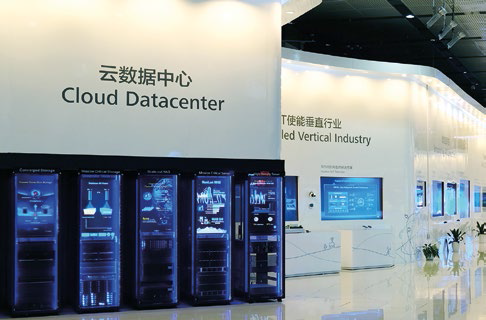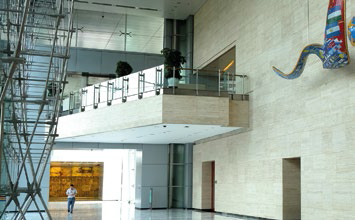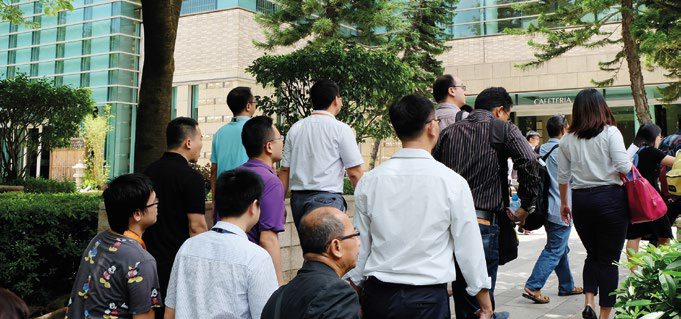Huawei brought us on a campus tour around their Shenzhen headquarters, and we left with a better understanding on how exactitude and aesthetics is a step up from competence.


Huawei brought us on a campus tour around their Shenzhen headquarters, and we left with a better understanding on how exactitude and aesthetics is a step up from competence.


A trip to Huawei’s Shenzhen campus would be illuminating to visitors who are curious with their ways of manufacturing, R&D, and quality of life for its employees. It’s nothing like the negative portrayal of Chinese companies relentlessly shared across social media; instead, Huawei was brimming with innovation, exhibits and talented workers. More importantly, Huawei is keen to position itself as one that pursues quality and attention to detail.
In a span of 29 years, Huawei went from making phone switches, to a multinational networking and telecommunications giant with its presence felt across 170 countries. It overtook Ericsson in 2012, and is now effectively the largest telco equipment manufacturer on this planet. Singapore’s primary telco, Singtel, has its copper-based voice and data network infrastructure maintained by Sino Huawei. 29 years is an achievement, considering how Ericsson and Singtel have 140 and 137 years in the business, respectively.
It’s easy to see how the campus reflected this quick growth juxtaposed against its collectivist work culture – staff was young and vibrant, but everyone minded their own business and kept to themselves unless they were called upon to act.
From a bird’s eye view, the Huawei campus is a fast-paced estate thronging with highly-talented, multi-lingual employees. Its entirety is located in the Longgang district, a northeastern part of Shenzhen, China. The last major upgrade to its facilities , which completed just last year, brings the total land mass of the campus to 2.238 square kilometers.
Even though the campus is located in its origin country, it came with facilities that clued us in on Huawei’s mission towards global dominance. For example, the campus has a residence area for foreign and local employees. The accommodation comes with all the key facilities found in private condominiums, which looks like its tenants can stay and live a life in relative comfort. In a place as big as China, having your workplace just one shuttle bus ride away is an understated convenience. At the same time, it hinted the ominous price to pay for globalization – your life will see Huawei at every turn and corner, at work or at play, awake or asleep. But that’s for their staff to worry about.
Besides the condos and offices for its workers, we found the grounds filled with various artifacts that broke the monotony of work itself. Between each building and complex, you will find meticulously trimmed flora, idyllic walkways, and thoughtfully-chosen public art – it was immediately clear to us that the Huawei compound isn’t purely functional. The campus was massive, with 10 complexes containing four blocks each. Perhaps it was the constraints of a tour, but we felt the transition from office to outdoors jarring and disorienting. In one moment, we’d be looking at modernized offices while they stuffed us with marketing strategies, and the next would see us strolling through a charming, man-made lake that kept a herd of black swans (imported from Australia, no less).
THE LAST MAJOR UPGRADE TO ITS FACILITIES, WHICH COMPLETED JUST LAST YEAR, BRINGS THE TOTAL LAND MASS OF THE CAMPUS TO 2.238 SQUARE KILOMETERS.






To cope with its 60,000 employees onsite, there are a total of 10 canteens. The one “canteen” we visited felt similar to a swanky mall’s restaurant floor. Staff have a choice between different cuisine types, plus a hotel-buffet outlet. Employees pay for the meals with their staff pass, which stores credit for meals taken on-campus – if you ran out of lunch money, you simply pay out of your pocket. Unlike other western tech giants, Huawei was good at providing the best resources, while reminding everyone that they are here to get the job done.
The Huawei folks were eager to show us their “F1 experience center” (F1 being the name of the first “F” building, not Formula 1). This exhibit shoecases Huawei’s futuristic technology and research, such as their work on bringing 10Gbps at 1ms latency connectivity for mobile devices, and their LampSite small cell technology for indoor cellular data – Huawei and Singaporean telco StarHub are actually trying that out within Marina Bay Sands itself. While technical, the exhibit did shed some light on how Huawei was able to rake in US$60.8 billion revenue in 2015.
To further emphasize how Huawei is really unlike a typical “Made In China” firm, we visited their device testing lab – where finished Huawei P9 handsets went through the proverbial mill. Like a first-timer inside a highly specialized fetish dungeon, we were introduced to every machine’s scope of torture.
An impressive drop test directed a P9 into the floor. The process was repeated twice, for every side and corner of the smartphone. While it wasn’t our phone, we still felt palpitations when watching a phone greet concrete. Another corner had an interesting “jeans friction tester”. This machine simulates a women’s handbag filled with personal effects (makeup, coins, and even dust). The phone goes into this machine and it’s jostled relentlessly for an eternity. In a whirlwind of explanations, we witnessed the phone’s trial by literal fire and pretend-jeans, and it is far beyond what an average smartphone user can put it through. Huawei users can rest easy.
While the campus tour was designed to be a showcase of Huawei’s strengths, exactitude, and staff welfare, we left with a better understanding about how one Chinese tech giant progressed so quickly by making most out of its culture. This is about getting big, and then getting good – done right.
“HUAWEI WAS VERY EAGER TO SHOW US THEIR “F1 EXPERIENCE CENTER” (F1 BEING THE NAME OF THE FIRST “F” BUILDING, NOT FORMULA 1). THIS EXHIBIT SHOWCASES HUAWEI’S FUTURISTIC TECHNOLOGY AND RESEARCH...”






















